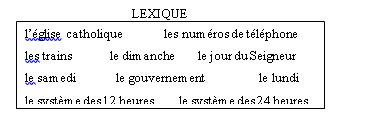Studies show conclusively that if large groups of children watch a great deal of televised violence, they will be more prone to behave aggressively. In other words, not all children will become more aggressive, but many will. Especially during adolescence, viewing lots of violence on television is associated with actual increases in aggression against others. It's little wonder that a large panel
of medical and psychological experts recently concluded that media violence is a serious threat to public health. It is fair to say, then, that televised violence causes aggression in viewers, especially children? Fortunately, that would be an exaggeration. Televised violence can make aggression more likely, but it does not invariably "cause" it to occur for any given child. Many other factors affect the chances that hostile thoughts will be turned into actions. Among children, one such factor is the extent to which a child identifies with aggressive characters. That's why it is so sad to find TV heroes behaving aggressively, as well as villains. A case in point is the popular Power Rangers TV programs for children. In each episode, the Power Rangers "morph" into superheroes who use karate and other violent actions to conquer monsters. After watching an episode of the Power Rangers, a group of 7-year-old children committed seven times more aggressive acts than a control group that didn't watch. The aggressive children hit, kicked, and karate-chopped their peers, often directly imitating the Power Rangers. Younger children, in particular, are more likely to be influenced by such programs because they don't fully recognize that the characters and stories are fantasies. Youngsters who believe that aggression is an acceptable way to solve problems, who believe that TV violence is realistic, and who identify with TV characters are more likely to copy televised aggression. In view of such findings, it is understandable that Canada, Norway, and Switzerland have restricted the amount of permissible violence on television. Should all countries do the same? According to the passage, why are young children more strongly influenced by violent programs?
a. They don't understand the difference between factual and fictionalcharacters.
b. They do not like aggressive characters in television programs.
c. They copy the aggressive behavior of older brothers or adults.
d. They are more interested in superheroes than are older children
A
You might also like to view...
Write down the sentences you hear. Then respond to each one with a brief but complete sentence in German.
1. ____________________________________________ 2. ____________________________________________ 3. ____________________________________________ 4. ____________________________________________
Use a word from the lexique to complete each sentence. You will not use all of the words. (1 point each)
Fill in the blank(s) with the appropriate word(s).

Aux États-Unis, __________ est le premier jour de la semaine. En France ce (this) jour est ___________.
The following sentences form a paragraph. Select the letter in each pair that is correct and does not contain run-on sentences or comma splices.
(A) When beer companies and other marketers began promoting the holiday it grew as a celebration of Mexican culture, not a historical remembrance. (B) Beer companies and other marketers began promoting the holiday it grew as a celebration of Mexican culture, not a historical remembrance.
“Nip it in the bud” is an example of ______.
a. a metaphor b. a simile c. a cliché d. personification